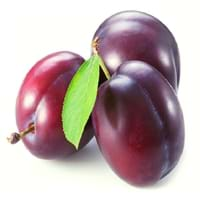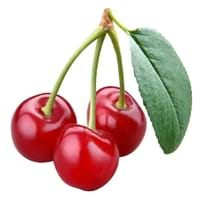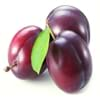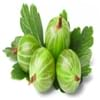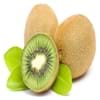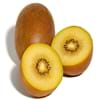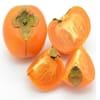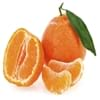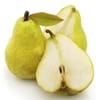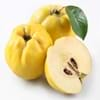Health Benefits
Cancer prevention, Cures gastro-intestinal troubles, Heart care, Increase in haemoglobin, Prevents diabetes
Arthritis prevention, Cancer prevention, Gout treatment, Regulation of heart rate, Treatment of osteoarthritis
General Benefits
Anti-inflammatory properties, Boosts immune system, Digestive aid, Eye care, Flu treatment, Helps in weight loss, Maintains healthy cholesterol level, Treatment of common cold
Anti oxidant properties, Anti-inflammatory properties, Controls blood pressure, Cures headache, Digestive aid
Skin Benefits
Anti-aging benefits, Brightens and lightens complexion, Reduces wrinkles, Skin revitalization, Treatment of dark spots
Anti-aging benefits, Brightens and lightens complexion, Skin rejuvenation, Treatment of dark spots
Hair Benefits
Prevents hair loss, Promotes longer and healthier hair, Protects hair, Remedy for split ends, Treatment of dandruff
Acts as moisturizer, Protects hair, Regulates hair growth, Rejuvenates scalp
Allergy Symptoms
Abdominal pains, Anaphylaxis, Vomiting
Anaphylaxis, Breathing difficulty, Fainting, Itching, Nasal congestion, Nausea, Swelling of mouth, tongue or lips, Tingling sensation in mouth, Vomiting, Wheezing
Side Effects
Allergic reaction
Abdominal cramps, Allergic reaction, Bloating, Intestinal gas
Best Time to Eat
As a snack in the late afternoon, Eat the fresh ones, avoid mixing with any other foods, don't eat after meal., Morning time (before lunch)
Best if taken as a breakfast (or empty stomach), As a snack in the late afternoon, Don't eat after meal, Morning time (before lunch)
Vitamin B5 (Pantothenic Acid)
Vitamin C (Ascorbic Acid)
Vitamin K (Phyllochinone)
Phytosterol
Not Available
Calories in Fresh Fruit with Peel
Calories in Fresh Fruit without Peel
Not Available
Not Available
Type
Tree fruit
Tree fruit
Varieties
Victoria, President, Czar, Ariel, Avalon and Oullins Gage
Evan, Mesabi, Meteor, Northstar, Montmorency and Mongolian
Color
Pink, Purple, Red
Red
Taste
Juicy, Sweet, Tart
Sweet-Sour
Origin
Caucasus
Europe, Western Asia
Soil Type
Clay, Loam, Sandy loam
Sandy
Climatic Conditions
Cold
Cold
Facts about
- In china, plums are used for production of wine.
- A chemical called amygdalin found in plum seeds, turns into toxic compound in human body.
- Plum tree produces fruit 3-5 yrs after planting.
- Using 1/4 tablespoon of almond extract with cherries, brings out the real flavor of cherries.
- In earlier times, serving cherry pie with ice cream was prohibited.
- 23 April is National cherry cheese cake day.
Top Producer
China
Turkey
Other Countries
Bosnia, Chile, India, Iran, Italy, Romania, Serbia, Turkey, United States of America
Albania, Armenia, Austria, Azerbaijan, Belarus, Croatia, Denmark, Germany, Hungary, Iran, Italy, Macedonia, Moldova, Poland, Russia, Serbia, Ukraine, United States of America, Uzbekistan
Top Importer
United Kingdom
Germany
Top Exporter
Chile
Poland
Botanical Name
Prunus domestica
Prunus cerasus
Synonym
Not Available
Not Available
Subkingdom
Tracheobionta
Tracheobionta
Division
Magnoliophyta
Magnoliophyta
Class
Magnoliopsida
Magnoliopsida
Species
P. domestica
P. cerasus
Difference Between Plum and Sour Cherry
We might think that Plum and Sour Cherry are similar with respect to nutritional value and health benefits. But the nutrient content of both fruits is different. Plum and Sour Cherry Facts such as their taste, shape, color, and size are also distinct. The difference between Plum and Sour Cherry is explained here.
The amount of calories in 100 gm of fresh Plum and Sour Cherry with peel is 46.00 kcal and 50.00 kcal and the amount of calories without peel is Not Available and Not Available respectively. Thus, Plum and Sour Cherry belong to Low Calorie Fruits and Low Calorie Fruits category.These fruits might or might not differ with respect to their scientific classification. The order of Plum and Sour Cherry is Rosales and Rosales respectively. Plum belongs to Rosaceae family and Sour Cherry belongs to Rosaceae family. Plum belongs to Prunus genus of P. domestica species and Sour Cherry belongs to Prunus genus of P. cerasus species. Beings plants, both fruits belong to Plantae Kingdom.
